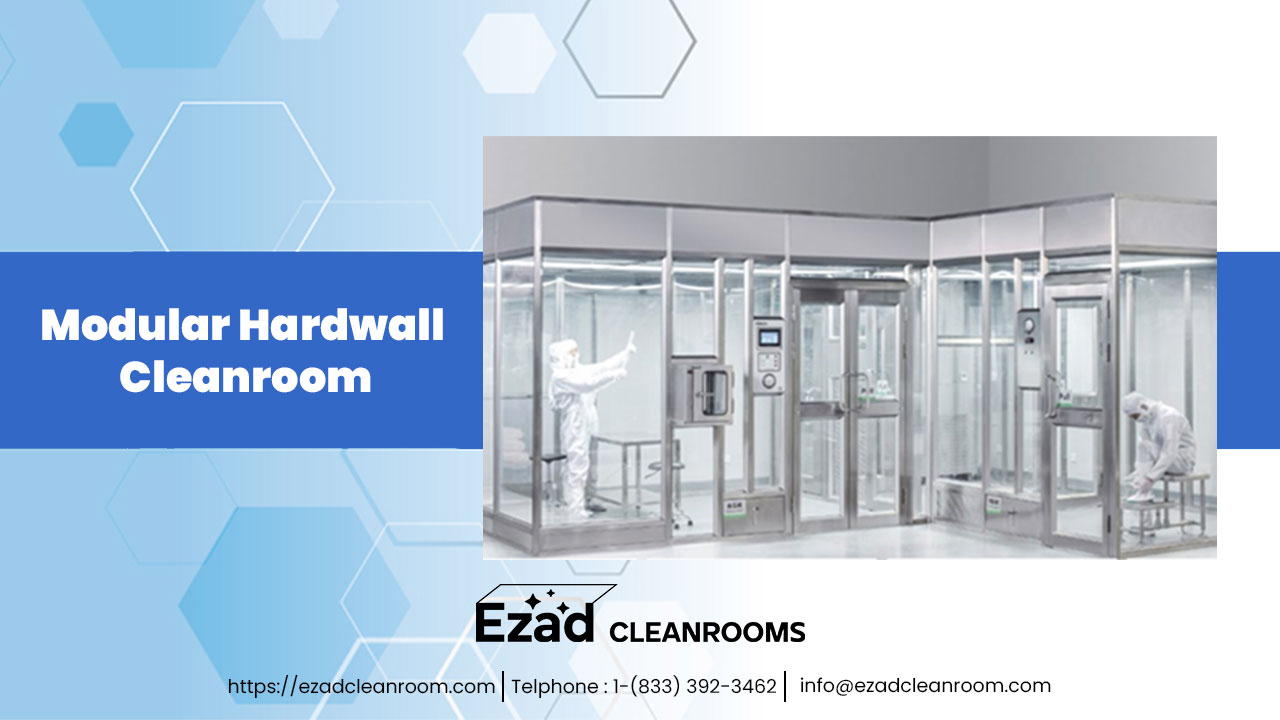A cleanroom can be defined as a room with a controlled environment, which ensures that the pollutants like dust, airborne microbes, and aerosol particles always stay filtered out in order to provide the cleanest area possible.
The first of such cleanrooms were invented by Willis Whitfield in 1962 and since then these cleanrooms have developed into essential infrastructures for companies spread around a wide range of industries.
The cleanrooms find their application in diverse industries. They are used for manufacturing products like electronics, pharmaceutical products, medical equipment, and more.
A Bit about Modular Cleanrooms
Modular cleanrooms are the most common kinds of cleanrooms that are in use today due to a list of benefits they offer. When compared to the traditional cleanrooms, which were used when the cleanrooms first came into existence, the modular cleanrooms are modern and comes with updated designs and infrastructures that accelerate the overall workflow, thereby adding in a wide range of convenient options, fostering accuracy.
These modular cleanrooms are usually required in manufacturing and examination facilities. They are not only robust in construction but also quite simple when it comes to installation. These features make them find their applications in various new and rapidly growing industries every day. Furthermore, the usage of modular cleanrooms becomes all the more significant in the industries and applications where minute particles may have an adverse effect on the production, manufacturing, or packaging processes.
Advantages of Modular Cleanrooms!
Modular cleanrooms benefit us in a lot of different ways. Here are some popular advantages that we have when opted for cleanrooms:
- They Help In Controlling Contamination.
- They Promise To Drive Efficiency And Reduce The Overall Wastage
- These Cleanrooms Are Tailored To The Requirements Of The Users. In Other Words, They Are Designed And Built To Suit The Demands Of The Process.
- The Modular Cleanrooms Can Be Manufactured In As Little As 2 Weeks. Furthermore, If Required, They Can Be Installed In A Matter Of Days, Which Is Comparatively Quite Less Time Than If You Choose To Set Up A Traditional Cleanroom.
- These Cleanrooms Are Fully Compliant, Validated To The International Standard ISO 14644-1.
- They Can Achieve ISO 14644-1 Class 4 – 8 Via HEPA Or ULPA Filtration.
- Furthermore, The Modular Cleanrooms Are Fully Scalable, Which Can Be Easily Extended Or Relocated And Can Be Over 200m² In Size.
Common Types of Cleanrooms
Cleanrooms are broad of two types, hardwall modular cleanrooms, and softwall modular cleanrooms.
Softwall Modular Cleanrooms – Softwall cleanrooms are usually portable, quite expandable, and most importantly, they are easy to relocate. These cleanrooms use pressurized polymer curtains, like vinyl curtains, instead of hard panels, which is why they are termed as “softwall.” The curtains for such cleanrooms are usually supported by tubular steel or aluminum frames along with a ceiling grid. However, many such structures are also left freestanding. It is important to also note that these frames do not require bolting hardware.
Modular Hardwall Cleanrooms – Modular Hardwall Cleanrooms feature walls of solid panels. These walls are made from a wide range of materials. Unlike the softwall modular cleanrooms, which are supported by frames, hardwall modular cleanrooms support the frame instead, which includes the ceiling grid and the roof. The usage of hard walls for their construction is the sole reason for their names being “hardwall modular cleanrooms.”
Uses of Hardwall Modular Cleanrooms
Hardwall modular cleanrooms are really effective in keeping an area safe and out of the reaches of contamination by airborne particles. These cleanrooms are essentially looked up to when temperature and humidity control are critical in affecting a particular project.
Some of the benefits of hardwall cleanrooms are:
- They are strong with serious resistance impacts and are highly durable.
- They are easy to clean and maintain when compared to the other cleanroom.
- They provide light enough for the projects that need to be carried out under ambient working conditions
- There is a range of doors or softwall strips for entry that can be installed.
- They allow the provision of printing the logo of a particular company on their panels
- They allow external staff to oversee the processes carried out inside the cleanroom.
- They come with specific workstations equipped with advanced facilities.
Some Other Key Highlights of Hardwall Modular Cleanrooms Are:
- Hardwall modular cleanrooms can be of all sizes.
- They are distinguished by ISO Class 5-8 cleanrooms.
- They can contain mini-environments, where the user can create ultra-clean environments inside the cleanroom
- They are used for manufacturing medical devices, life science, semiconductor manufacturing plants, and other similar applications.
- These cleanrooms are perfect for e-Liquid production.
- They are complete cleanrooms, equipped with HEPA filtration, LED lighting, change area, and more.
You can easily opt for hardwall cleanrooms. However, it is always recommended to analyze the requirements of your project and then decide upon the right kind of cleanrooms to carry out your work successfully! Good luck!
Original Source: https://www.launchora.com/story/what-is-the-use-of-hardwall-cleanroom


